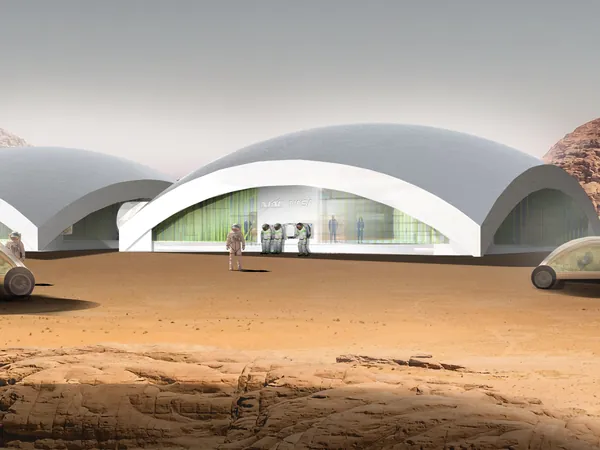
NASA’s Plan to Grow Mushroom Homes on the Moon: A Revolutionary Space Construction Technique
2024-09-29
In the quest for space exploration and habitation, the challenges of going beyond Earth are immense.
Transporting materials to the moon or Mars costs around a million dollars per half a kilogram, while astronauts face dangers from cosmic radiation, extreme temperature swings, and micrometeorites. However, NASA is tapping into an innovative solution that could change the way we build in space—growing mushroom structures on the lunar surface.
Fungi: The Future of Space Architecture
Chris Maurer, founder of the Cleveland-based architectural firm redhouse, which is collaborating with NASA, explains the need for alternative building materials for space environments. He highlights the concept of In-Situ Resource Utilisation (ISRU), which focuses on utilizing available materials rather than transporting pre-constructed habitats. Lunar resources, such as water and regolith (lunar dust), can sustain specific fungi species, which are engineered into resilient construction materials stronger than concrete.
This groundbreaking initiative, termed Mycotecture, is part of the Mycotecture Off Planet Structures at Destination project. Recently awarded a significant funding contract from NASA, the project aims to utilize mushrooms for extraterrestrial construction.
The process of creating mycotextured materials is surprisingly straightforward.
On Earth, Maurer’s team produces myco “bricks” by feeding organic plant matter or construction waste to various types of fungi. These blocks are then heated and compacted into durable building material. The process is adapted for space, where the need for compressive strength is diminished due to lower gravity. Instead, the focus shifts to creating materials that can withstand outward pressure within pressurized habitats.
Implementation plans include using inflatable molds to grow mycomaterials using fungal spores and algae.
These materials will thrive on the moon's water and regolith, drastically reducing the costs associated with transporting heavy materials from Earth. By leveraging this method, NASA could save trillions of dollars on lunar construction.
Unprecedented Protective Qualities
Research has revealed additional benefits of mycomaterials. They provide significant insulation against cold, protect against micrometeorites, and shield astronauts from harmful radiation. The melanin in mushrooms has been shown to effectively protect against electromagnetic radiation, with studies suggesting that just 8 centimeters (3 inches) of myco-material can block over 99% of harmful radiation. In contrast, regolith requires 3 meters (10 feet) for comparable protection. This radiation shielding is crucial for manned missions, as past concerns about radiation exposure have paused human exploration since the 1970s.
Habitat structures made from mycomaterial can potentially be grown in 30-60 days.
Allowing for swift deployment in extraterrestrial environments. The initial setup could include essentials like a toilet and kitchen, expanding as and when human crews arrive.
Looking to the Future
The first stages of testing are anticipated to launch with the Starlab space station, a collaborative venture involving several companies, expected to begin operations around 2028. As plans for these extraterrestrial fungal projects progress, NASA envisions using fungi to create multifunctional structures that can serve as both living spaces and scientific laboratories.
The prospect of autonomous, self-building structures may seem like science fiction, but experts agree that this innovative approach could facilitate not only space colonization but also environmental sustainability on Earth. Maurer's endeavors highlight a monumental leap forward in construction and habitat design technologies.
As NASA continues to explore its cosmic ambitions, the integration of mycotecture stands to revolutionize not only how humans occupy other worlds but also inform sustainable practices back on Earth. Researchers hope that support for such research will continue to grow, highlighting the dual benefits of preparing for space exploration while tackling current earthly challenges.
Strap in, because the next chapter in human settlement may just feature some very unearthly homes—crafted by the power of mushrooms!




 Brasil (PT)
Brasil (PT)
 Canada (EN)
Canada (EN)
 Chile (ES)
Chile (ES)
 España (ES)
España (ES)
 France (FR)
France (FR)
 Hong Kong (EN)
Hong Kong (EN)
 Italia (IT)
Italia (IT)
 日本 (JA)
日本 (JA)
 Magyarország (HU)
Magyarország (HU)
 Norge (NO)
Norge (NO)
 Polska (PL)
Polska (PL)
 Schweiz (DE)
Schweiz (DE)
 Singapore (EN)
Singapore (EN)
 Sverige (SV)
Sverige (SV)
 Suomi (FI)
Suomi (FI)
 Türkiye (TR)
Türkiye (TR)